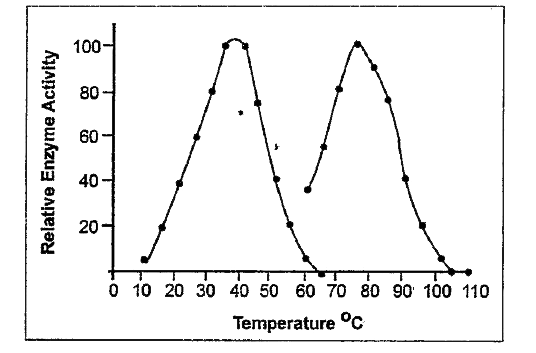Choose the incorrect statements A. liexacanth is released from onchosphere in pig's gut. B Detachment of mature progtottids in Taenia is Known es C. Temperature between 26-30°C help in emergence of metacercaria from snail. D. Polystomum is an ectoparasite of frog and turtle.
A and C
B,C and D
A and D
A,B,C and D
The correct Answer is:B
Topper's Solved these Questions
Similar Questions
Choose the incorrect statements A. Hexacanth is released from onchosphere in pig's gut. B Detachment of mature progtottids in Taenia is Known as Apolysis . C. Temperature between 26-30°C help in emergence of metacercaria from snail . D. Polystomum is an ectoparasite of frog and turtle.
View SolutionRead following statements (a-d) and choose the option with only correct statements.
a. Parturition occurs due to a complex neuroendocrine mechanism at the end of gestation period.
b. The signals for parturition originate from fully developed foetus and placenta which induces mild uterine contraction.
c. Foetal ejection reflex triggers release of oxytocin from foetal pituitary.
d. Oxytocin reduces uterine contraction under positive feedback control and causes expulsion of placenta followed by foetus known as parturition.
a and b
b and c
c and d
a and d
View Solution
Knowledge Check
The following graph depicts the effect of temperature on the activity of the two enzymes A and B that catalyze the same reaction. Choose the correct statement(s) for these results.

A. The rate of reaction in each case increases with increase in temperature and declines at higher temperatures due to denaturation of the enzyme.
B. Both the enzymes A and B are thermolabile.
C. At higher temperature, the reactants become highly energized and fail to interact with the active site, thus decreasing the rate of reaction.
D. The enzyme A is from a mesophilic organism, whereas the enzyme B is from a thermophilic organism.AA and BBB and CCC and DDA, B, DChoose incorrect statement regarding regeneration.
a) Formation of whole body from a small fragment
b) Replacement of the lost part
c) Growth of a small bud from the body
d) Planaria is a common example
AFormation of whole body from a small fragmentBReplacement of the lost partCGrowth of a small bud from the bodyDPlanaria is a common exampleRead the following statements and choose the option with incorrect statements. (a) Restriction enzymes are obtained from prokaryotes. (b) Restriction endonucleases cut DNA strands by breaking hydrogen bonds at specific points. (c) More than 230 restriction enzymes have been isolated from more than 900 strains of bacteria. (d) Each restriction enzyme recognizes a specific palindromic nucleotide sequence in DNA.
A(a) and (b)B(b) and (c)C(c) and (d)D(a) and (d)
Choose the incorrect statement about cockroaches from the following.
(a) Antennae have sensory receptors that help in monitoring the environment.
(b) The head is formed by the fusion of six segments and show great mobility in all directions and flexible neck .
(c) The first pair of wings arise from the mesothorax and the second pair from the metathorax.
(d) In males , the genital pouch or chamber lies at the hind end of abdomen bounded ventrally by 9th and 10th terga and dorsally by the 9th sternum.
View SolutionRead the following statements and choose the option with incorrect statements. (a) Restriction enzymes are obtained from prokaryotes. (b) Restriction endonucleases cut DNA strands by breaking hydrogen bonds at specific points. (c) More than 230 restriction enzymes have been isolated from more than 900 strains of bacteria. (d) Each restriction enzyme recognizes a specific palindromic nucleotide sequence in DNA.
View SolutionChoose the incorrect statement :
(a) The electric lines of force entering into A Gaussian surface provide nagative flux.
(b) A charge 'q' is placed at the centre of a cube .The flux through all the faces will be the same .
(c ) In uniform electric field net through a closed Gaussian surface containing no net charge ,is zero .
(d) When electric field is parallel to a Gaussian surface ,it provides a finite non -zero flux. Choose the most appropriate answer from the options given below :
View SolutionRead the following statements and find out the incorrect statements.
a. Ultimately all the food that is respired for life processes comes from photosynthesis.
b. The energy released by oxidation in respiration is directly used for the life processes.
c. The carbon skeleton produced during respiration is used as precursors for biosynthesis of other molecules in cell.
d. Plants, unlike animals, have no specialised organs for gaseous exchange but they have stomata and lenticels for this purpose.
e. During oxidation within a cell, all the energy contained in respiratory substrates is released free into the cell in a single step, which is trapped as chemical energy in the form of ATP.
View SolutionChoose the correct pair of statements.
A. The effluent from the primary treatment plant is generally released into natural water bodies.
B. In primary treatment, floating debris is remove by sequential filtration and the grit is removed sedimentation.
C. The greater the BOD of waste water, more is its polluting potential.
D. Biogas is a mixture of gases such as methane, hydrogen sulphide and carbon dioxide.
E. BOD is a measure of the inorganic matter present the water.
View Solution
